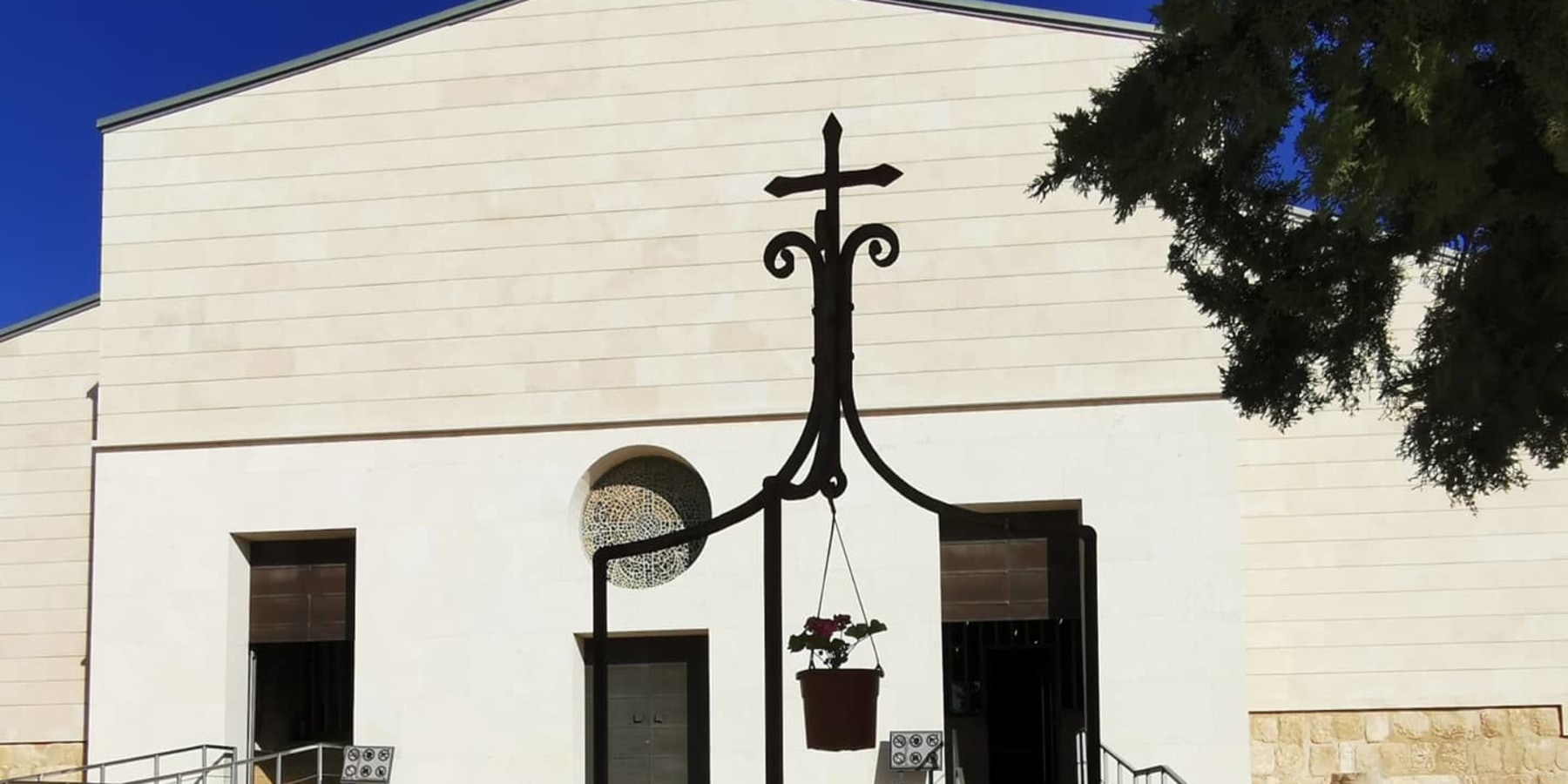
After 40 years leading the headstrong Israelites in the desert, Moses stood on the windswept summit of Mount Nebo and viewed the Promised Land of Canaan after having been told by God, "you shall not cross over there".
On a clear day, today's pilgrims can see the panorama Moses viewed: The Dead Sea, the Jordan River valley, Jericho, Bethlehem and the distant hills of Jerusalem.
As Deuteronomy 34:5-6 recounts, Moses died there in the land of Moab, "but no one knows his burial place to this day". Moses did, however, eventually reach the Promised Land, and He and Elijah were seen with Jesus at the latter's Transfiguration (Luke 9:28-36).
Mount Nebo is now in western Jordan. At 700 meters high, it looks down 1120 meters on the nearby Dead Sea (about 420 meters below sea level).
Early Christians from Jerusalem made it a place of pilgrimage. In the 3rd or 4th century, monks from Egypt built a small church on one of its peaks, Siyagha (a name meaning monastery), to commemorate the end of Moses'’ life. By the end of the 4th century, an empty" tomb of Mose" was being shown to pilgrims on the mountain.
The monks'’ church was expanded in the 5th and 6th centuries into a large basilica with a stunning collection of Byzantine mosaics and an elaborate baptistry. Though little remains of the early buildings, the mosaics can be seen inside the present-day shrine.
About 9 meters by 3 meters, the main mosaic depicts monastic wine-making, hunters and various animals.
In the 1930s, the Mount Nebo site was excavated, thanks largely to its description in the journal of an early woman pilgrim, Egeria, in AD 394. Six tombs were also found, hollowed into the rock beneath the basilica's mosaic floor.
Outside the present-day shrine stands an enigmatic serpentine cross, the Brazen Serpent Monument. Created by Italian artist Giovanni Fantoni, it imaginatively merges the life-saving bronze serpent set up by Moses into the desert (Numbers 21:4-9) and the cross upon which Jesus was crucified.
What to See at Mount Nebo
Elements of a triple-apse Byzantine basilica were uncovered by archaeologists in the 1930s and have been incorporated into the structure of the modern church building, known as the Memorial Church of Moses. The modern additions to the church are very simple, consisting of little more than a shelter over the fascinating excavations and ancient mosaic floors.
The excavated Old Baptistery is just inside the entrance to the left, which has one of the most interesting ancient mosaics in Jordan. The baptistery and the mosaic can be precisely dated to August 531 thanks to a Greek inscription, which also names the three workers who created it and the bishop at the time (Elias).
The Old Baptistery mosaic is in remarkably pristine condition because another one was laid over it just a few decades later in 597. The underlying mosaic remained hidden for nearly 1,400 years until it was discovered in 1976, when the one on top was removed for restoration (it now hangs on a wall).
The mosaic of 531 is a large square divided into four strips of scenes of men and animals, surrounded by a chain-style border. The top two sections depict fierce hunting scenes: a shepherd fighting a lion, a soldier fighting a lioness, and two horseback hunters defeating a bear and wild boar.
The lower scenes are pastoral but with a touch of the exotic: a shepherd watching his goat and sheep graze in the shade of trees; an ostrich on a leash held by a dark-skinned man, and a boy holding the leashes of a zebra and a spotted animal that looks very much like a camel but might be intended to represent a giraffe.
There are more mosaics in the nave and side aisles of the church, including some fragments of the 597 mosaic pavement. The oldest mosaic in the church is a braided cross displayed on the south wall.
Also hanging here are mosaics of animals from the Church of George in Mukhayyat. One of these is from 536 and has an inscription that some belief is the earliest Arabic script in Jordan (others argue it is old Aramaic).
In the far right-hand corner of the church is the New Baptistery (597 AD), which was previously a funerary chapel. It includes a small mosaic originally from the threshold bearing the greeting," Peace to all","
Next to the New Baptistry, a lovely mosaic cross from the original 4th-century church stands on a modern altar in its original location. A photograph of the Pope praying at the same altar is proudly displayed.
Next to the exit door is the Theotokos Chapel, added in the 7th century, where three monastery rooms previously stood. Its apse has a mosaic of a square object: a ciborium (vessel for the Eucharist) or altar canopy, accompanied by bulls and gazelles. The floor of the chapel is paved with mosaics of plants and flowers.
Khirbet al-Mukhayyat, a small town to the east, between Mount Nebo and Madaba. Here are the remains of the village of Nebo, mentioned twice in the Bible, where villagers in the 6th and 7th centuries constructed several churches.
On the highest point of the acropolis was the 6th-century Church of St George. The best-preserved floor mosaics are in the Church of Sts Lot and Procopius, who were venerated as martyrs.

